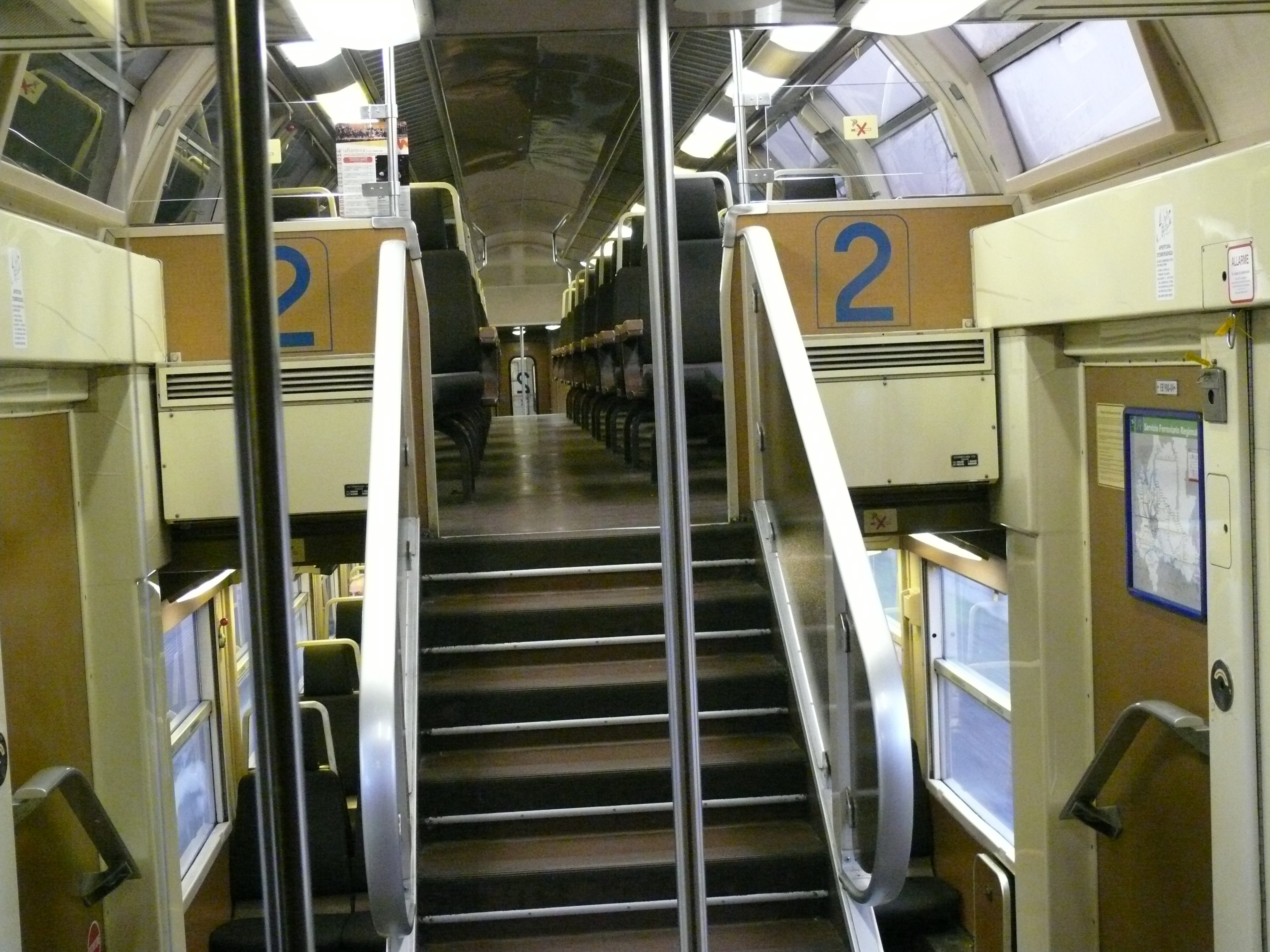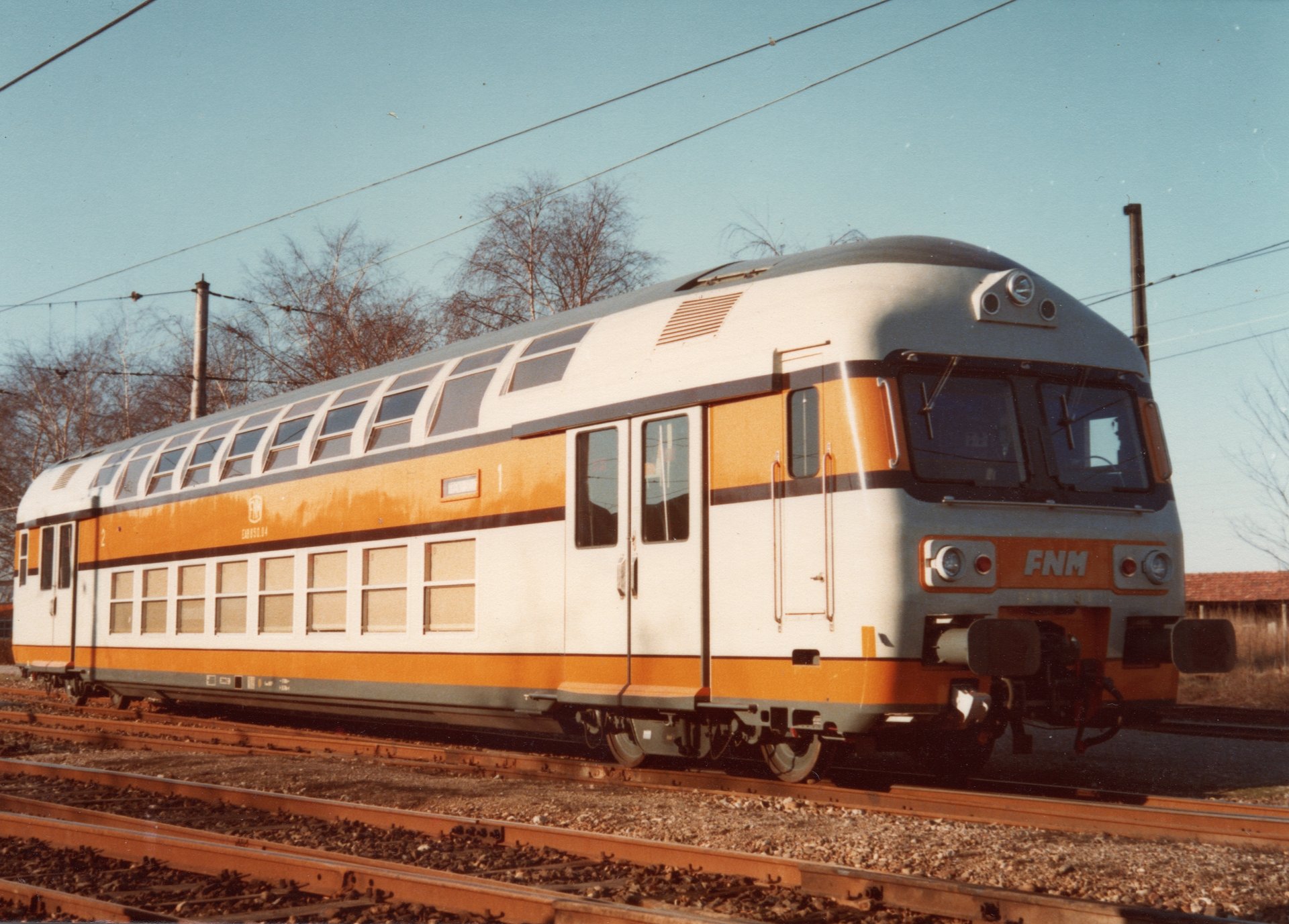These two-deck coaches of French design (CIMT Lorraine, 1974), built in Italy on licence to Officine Casaralta Bologna, were the first new coaches acquired by FNM after the last BREDA control trailers were delivered in the 1950s. They were ordered in 1979 with funds from Law 493/75 and Regional Law 22/78. These high-capacity coaches were chosen to form the new consists with the EB 750 electric railcars ordered in the same period. They were supplied in two configurations. Intermediate equipped coaches and first and second class control cars to form fixed composition consists. The main features of the original EB 950 and EAB 850 were the double-decker body with self-supporting structure in copper-steel sections and plates. FIAT 2P bogies with a lightweight steel box structure with pneumatic second stage suspension and coil spring primary stage. The biggest innovations were its 161 seated capacity, air heating and disc braking system. They were not fitted with air conditioning. A driving cab on the control car.
Casaralta

- Progettazione: 1974 (SNCF)
- Costruzione: 1979-1984
- Esercizio: dal 1980
- Massa a pieno carico: t. 64
- Carrelli: 2 Fiat 2P a due assi
- Diametro ruote Ø: 840 mm
- Costruttore: O.C.B. Bologna
- Lunghezza fuori tutto: 24.280 mm
- Larghezza: 3.128 mm
- Altezza imperiale: 4.310 mm
- Passo carrelli: 2.400 mm
- Passo totale: 20.300 mm
- Interperno carrelli: 17.900 mm
- Freni: a disco
- Velocita massima: 130 Km/h
- Posti a sedere: 161 (Intermedia)
- Riscaldamento: aria forzata
- Illuminazione: Tubi al neon
- Design date: 1974 (SNCF)
- Build date: 1979-1984
- Service date: from 1980
- Gross weight: 64 tons
- Bogies: 2 Fiat 2P with two axles
- Wheel diameter Ø: 840 mm
- Builder: O.C.B. Bologna
- Overall length: 24,280 mm
- Width: 3.128 mm
- Roof height: 4,310 mm
- Bogie wheelbase: 2,400 mm
- Passo totale: 20.300 mm
- Distance between bogie centres: 17,900 mm
- Braking system: disc
- Maximum speed: 130 Km/h
- Passenger capacity: 161 (Intermediate)
- Heating: blown air
- Lighting: Neon tube
The coaches featured an impressive double-decker body. Inside there is a single central space for both levels. At each end, above the bogies, there are two large pneumatically controlled sliding access doors. The large doors and the 161 seated capacity proved to be the trump cards of these coaches, especially given the heavy commuter traffic on the FNM railways. Access to the spacious platforms was via just two steps instead of the 3-4 of the older generation of coaches.
The platforms led to the lowered bottom floor down a few steps, which were located at the side of the elegant stairs with glass parapet leading to the upper floor. The lower floor, divided into 8 modules, contained 78 seats on 2- and 3-seater couches in orange leatherette, as on French coaches, and 4 folding seats. The 8 modules on the upper floor offered 64 seats on 2-seater couches. Other seats were created at the head, next to the toilet and on the folding seats on the platforms.

